Lakefield
Houses within 15km of this house
Displaying 52 houses.
Houses within 15km of Lakefield
Displaying 52 houses.
| House name | Description | |
|---|---|---|
| Druminshin Glebe | Rev. James Agar held this property at Druminshin Glebe freehold at the time of Griffith's Valuation when it was valued at £30. The property seems to have been known as Carrigallen Glebe or Carrigallen Lodge at various times though it is recorded as Druminshin Glebe house on the first edition Ordnance Survey map. It is still extant and occupied. |

|
| Lough Rynn | Lough Rynn was built in the early 1830s by Robert, Viscount Clements, heir to the 2nd Earl. At the time of Griffith's Valuation it was valued at £40. In 1906 it is recorded as the property of Col. H.T. Clements and has a valuation of £100. It is still extant. In 2006 it opened as a luxury hotel. For more information see www.loughrynn.ie and www.loughrynn.net. |

|
| Jamestown House or Jamestown Lodge | At the time of Griffith's Valuation Hugh O'Beirne was occupying a house at Jamestown, barony of Leitrm, valued at £40. Jamestown House was held by the O'Beirne family until the twentieth century though in 1894 Slater refers to it as the seat of Gilbert King, junior. In 1906 it was also valued at £40. It is still extant and occupied. |

|
| Riversdale | Matilda Shanley was leasing Riversdale House at Corrachole to William Lawder in the 1850s when it was valued at £12. In 1837 Lewis records it as the seat of the Shanley family. It is still extant and operates as a farm guesthouse. |

|
| Mohill Castle | At the time of Griffith's Valuation John Kane was leasing a property valued at £20 from Sir M. Crofton in the town of Mohill. |
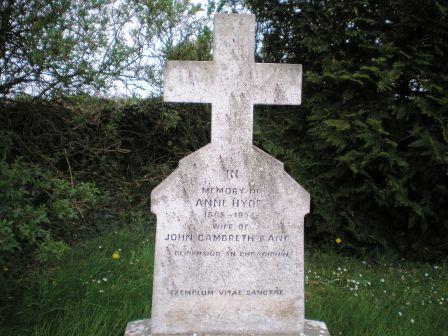
|
| Lawderdale | The National Inventory of Architectural Heritage survey states that Lawderdale was built in the early 1850s and has a tower which was added in the 1870s. At the time of Griffith's Valuation it was the property of William Lawder and was valued at £18. In 1906 it was the property of James Ormsby Lawder and was valued at £30. It is still extant. |

|
| Mough | Mough was one of the original properties held by the Lawder family from their arrival in the Leitrim area. Burke suggests that Mough afterwards became Lawderdale but map evidence would suggest that they were separate though adjacent properties. At the time of Griffith's Valuation the house was valued at £18. | |
| Mount Campbell | Josias Rowley was leasing the property at Mount Campbell, valued at £35, to William A. Lawder at the time of Griffith's Valuation. Slater refers to it as the seat of William S. Lawder in 1894. In 1906 William Rowley owned the mansion at Mount Campbell valued at £40. The house is no longer extant. |
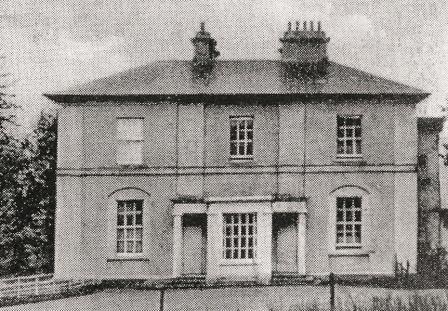
|
| Lismoyle | At the time of Griffith's Valuation Francis Waldron was the owner of a property valued at £12 at Lismoyle, barony of Leitrim. A house still exists at this site. | |
| Laheen | In the 1780s both Taylor and Skinner and Wilson recorded Laheen as a seat of the Peyton family. Lewis also records it as a Peyton residence. At the time of Griffith's Valuation it was being leased by Richard Peyton to Michael Fitzgerald and was valued at £15. The original Laheen house is not extant though a house and extensive farm buildings remain at the site. | |
| Derrycarne | At the time of Griffith's Valuation Derrycarne was the property of William Ormsby Gore and was valued at £30. Lewis records it as the seat of the Nisbett family in 1837. In 1906 it was in the possession of Lord Harlech (Ormsby Gore) and was valued at £33. The Ormsby Gore estate was eventually sold in 1924 and Derrycarne and about 80 acres were acquired by a Col. Kirkwood, a relative of the Kirkwood family of Woodbrook, county Roscommon. It changed hands again several times before being acquired by the Land Commission in 1952. The house was demolished shortly afterwards. | |
| Glasdrumman | The property at Glasdrumman in the parish of Fenagh, belonging to William Lewis, described as "in chancery" was leased to John Murphy in 1856 when it was valued at £8. It is still extant and occupied. |
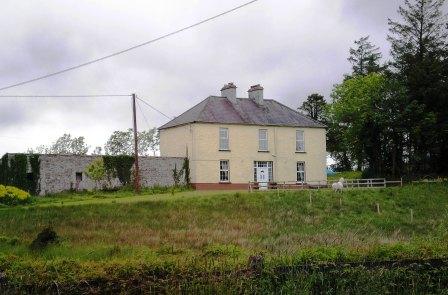
|
| Fenagh Glebe | Rev. George Beresford held the Glebe at Fenagh, from the Ecclesiastical Commissioners at the time of Griffith's Valuation when it was valued at £16. The Buildings of Ireland survey states that the house was built c. 1829. It also records that the nearby church, built c.1790, was extended in the 1850s by the Pack Beresford family. Both buildings are still extant and in use. |

|
| Bunnybeg House | Lewis records Bonnybeg as a seat of the Lawder family in 1837. At the time of Griffith's Valuation it was owned by William Lawder and was valued at £10. A modern house and farm exist at the site now. | |
| Lakeview (Mohill) | At the time of Griffith's Valuation William Slacke was leasing a property valued at £8 at Drumdart, barony of Leitrim, to William Lawder. | |
| Drumrahan | Lewis records Drumrahan as a seat of the O'Brien family in 1837. At the time of Griffith's Valuation it was being leased by John O'Brien to Phillip Taggart and was valued at £25. Entrance gates have been reconstructed but the original house is not extant. | |
| Cottage Vale | At the time of Griffith's Valuation Charles Ensor was leasing a property valued at £10 at Drumdarkan, barony of Mohill, to George West. There is still an occupied house, part of a large farm, at this site. |

|
| Aughry House | Aughry House built after the publication of the First Edition Ordnance Survey map. At the time of Griffith's Valuation it was owned and occupied by Charles T. Ward and was valued at £13. Aughry Castle (in ruins) is visible nearby on the 1st edition map. This may be the property referred to in 1786 by Wilson as the seat of Mr. Nesbit. Elaborate modern entrance gates identify Aughry House which appears to be close to the site of the original. | |
| Drumcree Mill | Josias Rowley was leasing a mill and house valued at £13 in this townland to Alexander Acheson in the 1850s. | |
| Aghamore House | Russell B. Cameron was leasing this property from the Crofton estate at the time of Griffith's Valuation when it was valued at £12. A house is still extant though not on the original site. | |
| Drumard House | Rev. Thomas Jones was leasing a property at Drumard, barony of Mohill, valued at £25 to William Jones at the time of Griffith's Valuation. It is no longer extant. | |
| Georgia | At the time of Griffith's Valuation, the Forbes estate was leasing a house valued at £6 to Andrew McCloughesy at Georgia or Gorteenoran. The premises is visible on the early 20th century maps but the site is now occupied by a hotel complex. | |
| Gort House | Margaret O'Brien was leasing a house valued at £15 in the townland of Gortnalamph from the Clements estate in the 1850s. Gort House is still extant and occupied. |

|
| Cloone Grange | A house built after the publication of the first Ordnance Survey Map. At the time of Griffith's Valuation Rev. John Carson was occupying the property which was valued at £25. In 1906 William H. White was the owner of this house, valued at £28. The site of the original house is now occupied by farm buildings. | |
| Headfort/Headford | At the time of the first Ordnance Survey the property at Headford was described as belonging to "S. White, non resident, property going into decay". In the seventeenth and eighteenth centuries it was a seat of the Jones family. Wilson, perhaps incorrectly, refers to it as the seat of Mr. Johnston, in 1786. The house was immortalised by Anthony Trollope in his novel ''The McDermotts of Ballycloran''. The ITA survey of the 1940s recorded it as in ruins and it remains as an ivy-covered ruin today. It was pointed out for this survey as "the ruins of that auld Ballycloran Castle"! |
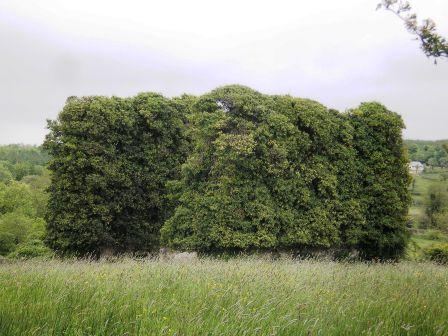
|
| Clooncoe House | Lewis records "Brooklawn" as a seat of the O'Brien family in 1837. Brooklawn House in the townland of Clooncoo, parish of Cloone, was part of the Clements estate but is described at the time of the first Ordnance Survey as the seat of a Mr. Crawford. It is labelled Brooklawn on the 1st edition Ordnance Survey map but as Clooncoe House on all subsequent editions. It is still extant and occupied. |

|
| Lurga House | At the time of Griffith's Valuation, Francis Scanlan was leasing a property at Lurga, barony of Mohill, valued at almost £3 together with over 90 acres from the Crofton estate. This property is labelled Lurga House on the 1st edition and subsequent maps. A house and farm are still extant at the site. | |
| Kilmore House | Built by the Reverend Edward King, Bishop of Elphin circa 1630. Home of a branch of the Lawder family in the 18th century until the murder of James Lawder in 1779. The Auchmuty family resided at Kilmore in the 19th century. The demesne was named Aghaward on the first Ordnance Survey map. A large farm is still extant at the site. | |
| Ballycummin | A house valued at £8 when occupied by Roderick J. Hanley, who held it from Laurence Murray, at the time of Griffith's Valuation. Described by Lewis in 1837 as the former seat of the Earl of Roscommon and at that time occupied by Lieutenant Rodrick J. Hanly. | |
| Cartron (King) | The home of the Waldron family in the 18th and early 19th centuries. Occupied by Gilbert Hogg in 1837. Valued at £10 and occupied by John B. Hogg at the time of Griffith's Valuation who held the house from Sir Gilbert King. A substantial farm is still extant at the site. | |
| Cloonteem | Described in 1837 by Lewis as "a handsome and newly erected lodge of the Marquess of Westmeath". The house was valued at £14 in the 1850s and was held by Lord Greville in fee. The buildings have disappeared by the time the 25-inch Ordnance Survey map was published in the 1890s. | |
| Charlestown House | In 1786 Wilson refers to Charlestown as the "the fine seat of Mr. King, most delightfully situated on the Shannon". The first Ordnance Survey map marks both Charlestown House and Charlestown Old House closeby at M984 976. Valued at £46 at the time of Griffith's Valuation. In 1894 Charlestown was the residence of Sir Gilbert King. The house is no longer extant but extensive estate architecture survives. |

|
| Dangan | Dangan Castle was one of the main residences of the O'Beirne clan but was badly decayed by the early 17th century. Dangan House was built nearby and was occupied by the O'Beirne family from the 17th to the 19th centuries. They held Dangan from the King family. Father Martin Coen writes that Dangan House in the parish of Kilmore was the birthplace of George J. P. Browne, Bishop of Galway in the 1830s. Patrick O'Beirne was the occupant in 1814 and 1837. It was the residence of Mathew Hanly at the time of Griffith's Valuation when the house was valued at £8. Farm buildings exist at the site. |

|
| Tully Lodge | Built circa 1820, occupied by J. W. Kelly in 1837 and by Christopher Lawder in the 1850s who held the property in fee. It was valued at £20. Occupied by Samuel Russell in 1906. Another house marked as Lakeview was in the demesne grounds at the time of the first Ordnance Survey. In 1837 W. McDonnell was residing in Lakeview [M987 921] |

|
| Sallyfield | A Hanly home from at least 1749 but by the 1850s held by George Lawder in fee. It was described at this time as a steward's house with offices and a lodge, valued at £3. It is labelled on both the 1st and 25-inch edition Ordnance Survey Maps as Sallyfield. It is no longer extant. A house named Cottage was also in the townland of Lavagh at N005 895 on both maps. | |
| Flanker House | The Walsh estate, including Drumsna House, was advertised for sale in the Landed Estates' Court in 1861. The sale notice describes the dwelling house as "handsome and commodious" with a large walled garden. At the time of Griffith's Valuation Mary Anne Walsh was leasing the house, valued at £22 from Josias Rowley. The accompanying map indicates that it was called Flanker House. In the 1870s several members of the Keogh family, with an address at Flanker House, Drumsna, held property in county Roscommon. |

|
| Clooncahir | John Walsh was the lessor of a vacant house valued at £12 at Clooncahir, barony of Mohill at the time of Griffith's Valuation. He was leasing lands in the same area from the Crofton estate. A house still exists at the site. | |
| Drumod More | At the time of Griffith's Valuation, Catherine Warren was leasing a house valued at £9 to Francis Murphy at Drumod More, barony of Mohill. Extensive redevelopment and road building have taken place in this area though there are still buildings at the site. | |
| Drumkilla or Mohill Glebe | At the time of Griffith's Valuation Rev. Arthur Hyde was leasing the Glebe at Drumkilla, valued at £22, from the Ecclesiastical Commissioners. | |
| Glebe Mohill | At the time of Griffith's Valuation, Rev. Arthur Hyde was leasing the glebe house at Drumkilla, barony of Mohill from the Ecclesiastical Commissioners. It was then valued at £22. | |
| Lowfield | A Lawder home in the 18th and early 19th centuries. Occupied by John B. Hogg at the time of Griffith's Valuation who held it from Sir John Gilbert. The house was valued at £2. It is not visible on the 25-inch map of the 1890s. | |
| Clogher | Built post 1838, home of William Parks at the time of Griffith's Valuation and valued at £7. Thomas H. Parke was born at Clogher in 1857. He became a surgeon in the British Army and was with Stanley in Africa. Clogher was purchased by the Collins family from the Parkes in 1910. | |
| Belmont | At the time of Griffith's Valuation Mary Anne Walsh was leasing a property valued at £17 to Hugh Byrne at Drumsna, barony of Leitrim. In June 1883 Gerald F. Walsh offered for sale the property in Drumsna known as Belmont. Modern housing now occupies the site. | |
| Castleforbes | The National Built Heritage Service suggests the current Castleforbes House dates from the middle third of the 19th century but incorporating the fabric of its 17th and 18th century predecessors. At the time of Griffiths Valuation in the early 1850s, it was valued at £80. It was occupied by Lady Forbes at that time. It served as the main seat of the Forbes family, Earls of Granard, since the 17th century. In 1906 it was valued at £110. It is still extant. |

|
| Rose Cottage (Clongesh) | John V. Crawford was leasing this property from the Earl of Granard’s estate at the time of Griffiths Valuation in the early 1850s when it was valued at £15. It is labelled as Rose Cottage on all editions of the Ordnance Survey maps. A later house exists at the site. | |
| Lisbrack House [Bishop's House] | In 1837 Lewis noted Lisbrack Cottage as the seat of Verschoyle Crawford. At the time of Griffiths Valuation in the early 1850s, the representatives of George Crawford were leasing this property to James Bell, when it was valued at £15. In 1868 George Crawford and others offered for sale 13 acres at Lisbrack, known as the Cottage holding, in the Landed Estates Court. This holding was occupied at the time by James Bell. The National Built Heritage Service suggests the building on the site now was built in the 1870s with an ecclesiastical purpose but that it replaced an earlier house, possibly known as Lisbrack House. The current building later served as a convent and as a school. | |
| Moneylagan Cottage | In 1837 Lewis referred to Moneylagan as the seat of Dr. Forbes Crawford. At the time of Griffiths Valuation in the early 1850s it was leased by General James Hey from John Crawford when it was valued at almost £14. The 1840 Valuation Office books show a £15 valuation. An altered house is extant at the site now. | |
| Knockmartin House | Michael Cody was leasing this property from the Porter estate at the time of Griffiths Valuation in the early 1850s when it was valued at over £12. It is labelled Knockmartin House on the 25-inch OS map of the early 20th century. A later house exists at the site. | |
| Lismoy Upper | Mrs. Fitzgerald was leasing this property from the Governors of Mercer’s Hospital at the time of Griffith’s Valuation, in the early 1850s, when it was valued at £18. The National Built Heritage Service suggests that the original house was built in the late 18th century but underwent several modifications in the 19th century. In 1837 Lewis recorded it as the seat of a Reverend J. Mitchell. Leet referred to it as the residence of Reverend Kilner Davidson in 1814. In the 1870s it was noted as an address for “H. Dundas”. It is still extant and occupied. |

|
| Crowdrumin Lodge | At the time of Griffiths Valuation in the early 1850s Patrick Mannion was leasing this property from Samuel Galbraith’s estate when it was valued at just over £3. A more substantial property, labelled Crowdrumin Lodge, is shown on the 25-inch Ordnance Survey map of the early 20th century. It has been replaced by a modern house. | |
| Carrickmoyragh House | Thomas Gregory was leasing this property from John Jessop’s estate at the time of Griffiths Valuation in the 1850s when it was valued at over £6. The National Built Heritage Service suggests that the current house was built sometime in the mid-19th century. A smaller house is shown at the site on the 1st edition Ordnance Survey map of 1838. A larger property is labelled Carrickmoyragh House on the 25-inch edition of the early 20th century. It is still extant though not in use. |
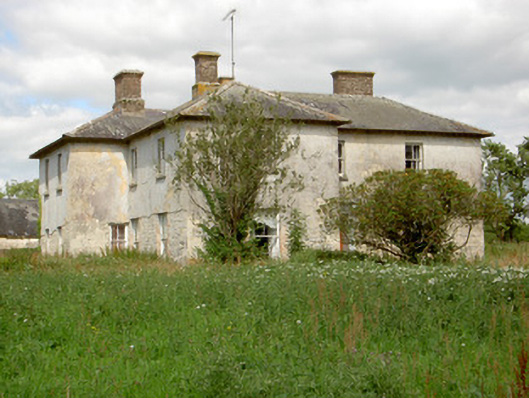
|
| The Hermitage (Clongesh) | In 1906 Tobias Peyton owned a property at Breanrisk valued at almost £15. This had been the family home of his mother, Frances Ellis. At the time of Griffiths Valuation in the early 1850s it was occupied by Thomas H. Ellis and valued at £8. The National Built Heritage Service suggests the original house dates from c.1780. It is labelled The Hermitage on the 25-inch Ordnance Survey map of the early 20th century, the name by which it is still known. |
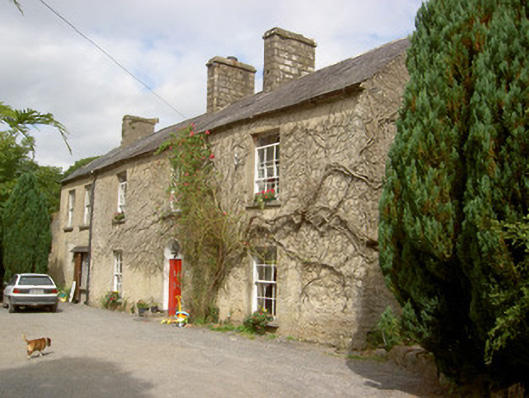
|

